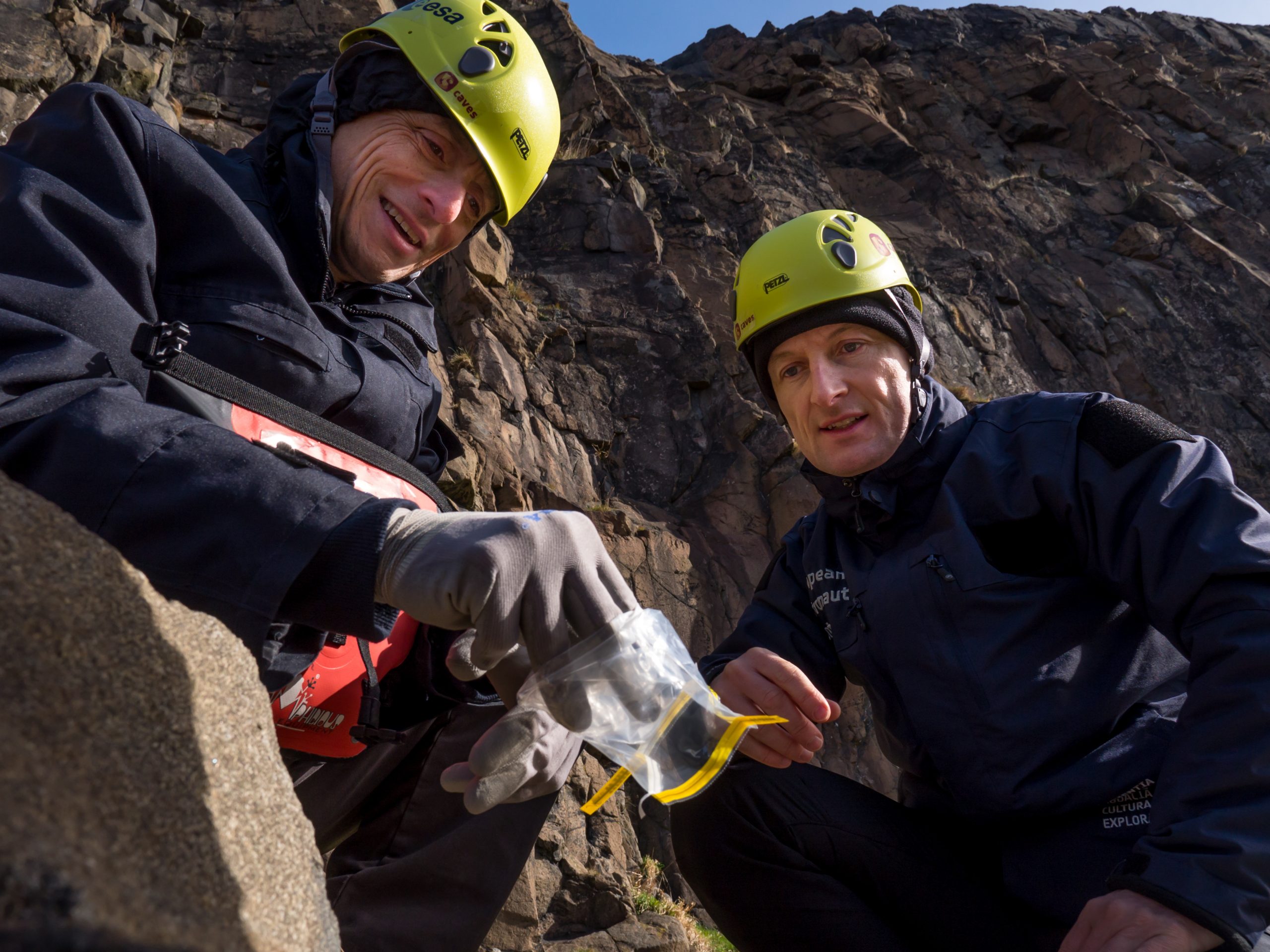The rock, collected during NASA’s Apollo 16 mission in 1972, and brought to Germany by ESA astronaut Matthias Maurer, will take pride of place in a new exhibit in the foyer thanks to a partnership between ESA and the German Space Agency at DLR.
A rock as old as Earth
The sample received from NASA has the melodious name “60025,373”. It measures 3-4 cm in diameter and is piece of a larger rock – sample number 60025. This stone was collected by Apollo 16 mission commander John W. Young during his second lunar spacewalk and has since been cut into pieces for use in different studies.
Matthias will soon be launched to the International Space Station for his first mission ‘Cosmic Kiss’ and brought the rock from the USA to EAC for his final European training week in September.
Thanks to his participation in several Pangaea editions, Matthias has a good grasp on lunar geology. He joined the geology training in 2017, but also explored more recently a fjord in Norway in the search for Moon analogues and is a strong advocate for the Luna Moon research and training facility to be built opposite EAC in partnership with DLR.
Matthias describes the Moon as “a pure treasure trove for planetary scientists who work on understanding and modelling the evolution of our solar system.
“On the Moon there is no atmosphere, no active volcanoes or plate tectonics, nor anything alive on its surface,” he explains. “Reading and understanding lunar geology and especially the Moon’s impact craters is key to understanding our galaxy and the universe beyond. This rock is a reminder of where Europe is headed and the role human and robotic exploration has to play in helping to decode this mystery.”
Analysis of lunar samples have also provided evidence of potential resources such as water and oxygen that could be extracted for use by space travellers. This kind of in situ resource utilisation (ISRU) will be key to establishing a sustainable human presence on the Moon.

ESA astronauts Matthias Maurer and Pedro Duque practicing geo-microbiological sampling techniques during Pangaea 2017. Credit: ESA-S.Sechi
Interactive EAC
NASA has loaned the rock to ESA on a long-term basis under special conditions. Sealed in a protective case, it is not intended for research, but instead provides an opportunity for visitors to see a small slice of the Moon in person.
Emilia Rosselli Del Turco is the designer responsible for the Moon rock exhibit at EAC. For over six months, she worked on a concept to both protect the rock and engage visitors with information about lunar geology.

Emilia Rosselli Del Turco
The final concept, which will soon be exhibited in the EAC foyer and then in Luna, comprises a cabinet that hosts the rock in its transparent case, as well as a projector and touch panels to display information. As the rock is sealed in its case and cannot be touched, Emilia says it was important to make the exhibition as interactive as possible.
“I wanted to create something tangible, to build that connection between visitors and the rock,” Emilia explains. “Obviously visitors cannot touch the rock itself, but the projector will replicate the rock’s shadow coming out of the case.
“By interacting and touching the shadow, visitors will be able to navigate through the information. This way, they will learn what lunar rocks can tell us about the origin and composition of Earth and the Moon as well as the importance of collecting further lunar samples and ESA’s involvement in future Moon missions.”
Though the concept for the rock’s display is complete, the EAC team has had to be patient as the rock had to be personally transported from the USA to Europe and requires a high level of security at all times.
“Due to current restrictions as a result of COVID-19, it is unclear when we will be able to properly unveil this new addition to our foyer and allow people to visit,” explains Aidan Cowley, ESA science advisor and head of Spaceship EAC. “However, when we do, it will be an exciting time for EAC as we look forward to the future of Europe in space.”



